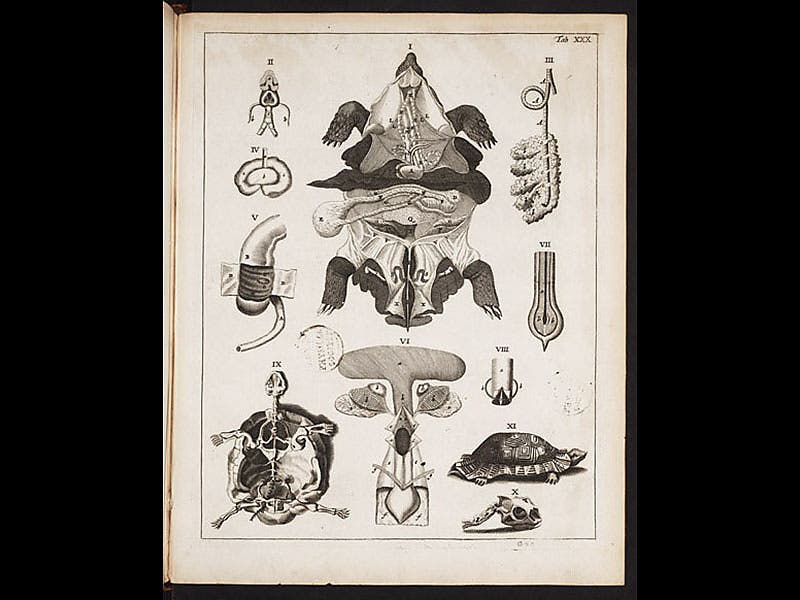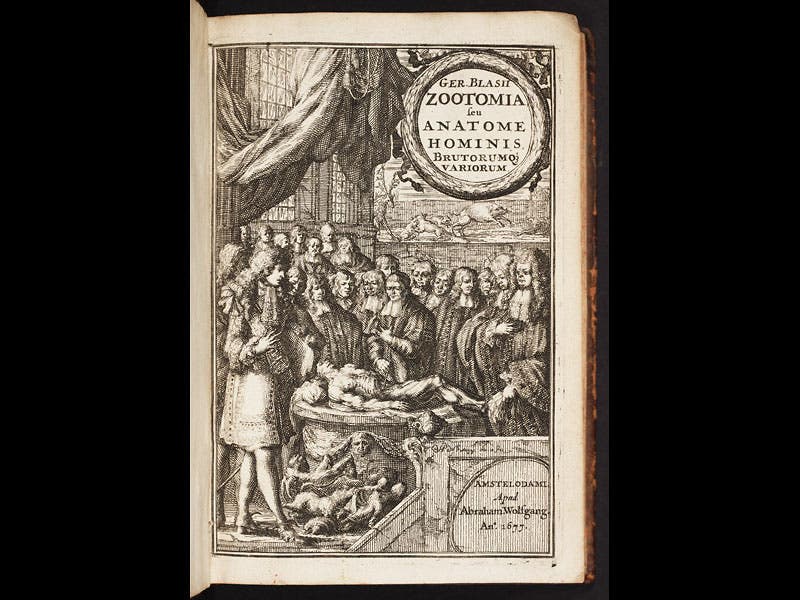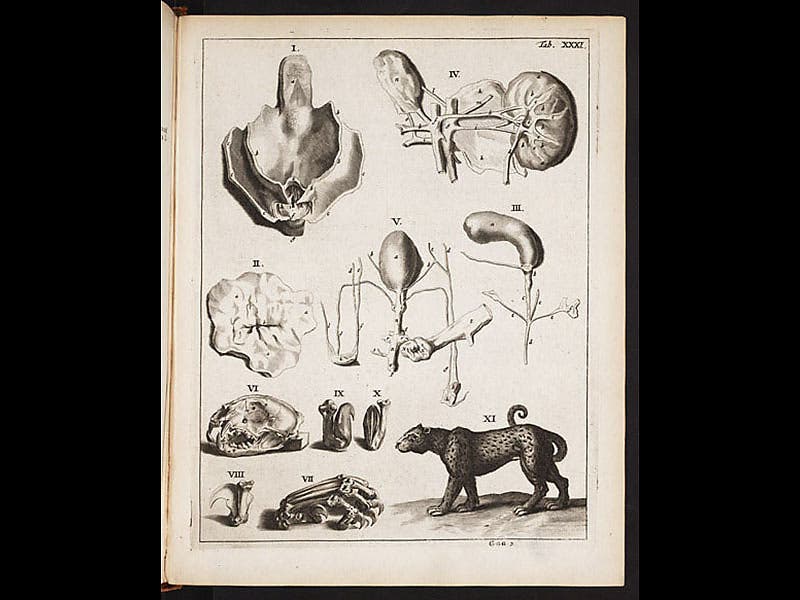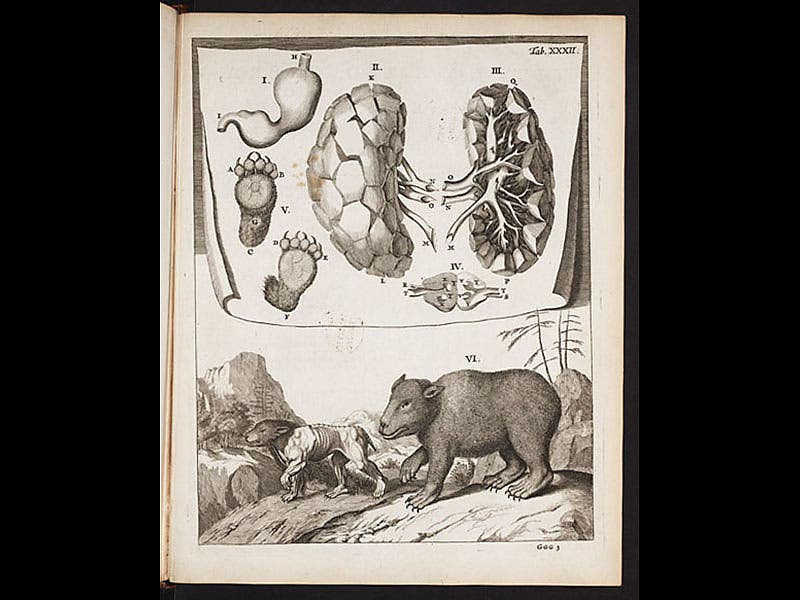Scientist of the Day - Gerard Blasius

Linda Hall Library

Linda Hall Library

Linda Hall Library

Linda Hall Library

Linda Hall Library
Gerard Blasius, a Dutch physician and anatomist, was born Oct. 3, 1627. Blasius was a professor at the University of Amsterdam (where he had the pleasure of having Nicolas Steno as a student for a few months in 1661, when Steno was just setting out on his European travels). In the early 1670s, Blasius became interested in animal anatomy, and he published three works on the subject. One week ago, we celebrated Claude Perrault as our Scientist of the Day, and we noted that Perrault came to comparative anatomy from natural history, arguing that animal anatomy was an essential part of zoology. Blasius came to animal anatomy from the study of human anatomy. He taught that subject in Amsterdam, and he began teaching comparative anatomy as a way to help students understand the anatomy of the human body. His first two books on comparative anatomy, Observata anatomica (1674; second image) and Zootomia seu Anatome (1676) reflect the subordination of animal anatomy to human anatomy, especially the engraved title page of the 1676 book, with its human dissection scene (third image). But by 1681, when Blasius published his Anatome animalium (fourth image), he had come around to Perrault's point of view. Human anatomy had disappeared, and animal anatomy was being pursued for its own sake.
We see above three of the plates from the 1681 book, showing a tortoise (first image), a tiger (fifth image), and a bear (sixth image). Was Blasius influenced by the publications of Perrault and the Paris anatomists? If one compares the plates in Blasius's book with those in the Paris publication, it is apparent that they are very similar in style and format. In fact, Blasius's bear plate is explicitly copied right out of Perrault’s book. Blasius's final publication is our best evidence that Perrault's message, by 1681, had made it to the Netherlands, and the study of zoology has become, to some extent, a laboratory science.
We have all three of the Blasius books discussed above in our History of Science Collection.
Dr. William B. Ashworth, Jr., Consultant for the History of Science, Linda Hall Library and Associate Professor, Department of History, University of Missouri-Kansas City. Comments or corrections are welcome; please direct to ashworthw@umkc.edu.




![“Aurora Borealis,” hand-colored wood engraving by Josiah Wood Whymper, [Natural Phenomena], plate 2, 1846 (Linda Hall Library)](https://assets-us-01.kc-usercontent.com:443/9dd25524-761a-000d-d79f-86a5086d4774/0245ffcb-b70c-477c-8792-0a73ebd54eb2/Whymper%2011.jpg?w=210&h=210&auto=format&fit=crop)


